A Postcard from the Principal’s Office: #2
Badges? We don’t need no stinkin’…wait. Wrong movie.
We are about a month into the school year in these parts (here in the Great Pacific Northwest). After 52 straight years of showing up for the first day of school (from my day one as a kindergartener to my last day as a principal), I’m enjoying the start of my third year away from the excitement, drama, rigor, and challenges of leading a school as its lead learner (ie principal). After a month, students and teachers have settled into routines, schedules have been ironed out, open houses and curriculum nights are being planned or are happening now, and honeymoons have ended with students (and teachers and parents—and principals?) beginning to show their habitual unhoneymoon-like behaviors once again. School has officially started and everyone is digging into the world’s most important work of teaching and learning. Students have by now also learned the teacher’s classroom and the school’s rules. Except when there aren’t any.
Toward the latter part of my administrations at two different schools, I began to lead my school cultures (involving students, parents, and staff) into a “rethink” of school rules. Eventually, with teacher leaders supporting the move, I ended the practice of having school rules at both my schools. Yep, at my schools, we had no rules!
What are Rules Actually for?
Have you ever broken a rule in your life? C’mon, think hard (consider all your schooling and teachers, all the Monopoly or Chutes and Ladders you’ve played, all the playground sports, and even your workplace norms. And if you golf, well, forget about all the rest.). It’s likely you have and it’s likely they weren’t major infractions (unless you happen to be reading this while you are in prison—in which case, I got nothing for you—unless you could go backwards in time). The reason why you’ve broken rules, even small ones, is because rules are made to be broken!
Rules are meant to establish order, control, and boundaries. Rules are rigid—there is no grey, or there isn’t supposed to be grey, when it comes to things you don’t do: ie BREAK THE RULES.
Whoa is the adult who sets a rule with a child then wavers on it in any way—either in holding accountability to the rule or in changing the rule a bit so that, really, “maybe you didn’t actually break the rule.” Or even when there are no consequences to rule-breaking. The child, in these instances, learns that maybe the adult’s rules really aren’t all that.
Rules are therefore best given for games and sports and the like so that the playing field is as level as possible for all players. And you need referees to administer the rules. A holding penalty or yellow card infraction has to be the same for both teams otherwise the game is not fair (the Seahawks, though, should always get the benefit of the doubt.).
In school, traditionally, rules were typically phrased in the negative. “No running in the hallways.” “No talking when the teacher is reading aloud.” “No cutting in line.” “No fighting on the playground.” Sound familiar? Add your own here. Ever want to know just how many rules a school might have? In most school handbooks, you may see a list of rules—but I guarantee you those aren’t nearly all the rules that would need to be in place. Because, you see, no adult, and no adults in schools, could ever dream to create all the rules a school would need to keep control of their students. Students have a different job! They are built to find all loopholes.

A child’s job
It is in a child’s DNA to probe the boundaries of their lives and environments as they grow. THAT, in fact, is how they grow—that, in fact, is learning. If there are rules, you can be 100% certain there will be at least one, but likely many, students who will find the loopholes that are ALWAYS found alongside every rule. I’ve worked with some master defense lawyers who were trapped in the bodies of 5 and 6 year-olds. Sometimes their logic can be spot on as to why they “didn’t really violate your rule.” Which means two things: 1. The rule wasn’t expansive enough or 2) The adults didn’t really think things through to consider all the possible loopholes (silly them, that would mean they’d have to think like, oh, say 5 and 6 year-olds).
If you are a parent, or have been around toddlers, you can see this DNA characteristic in even the youngest of children. Ever tell, or watch a parent tell, a child to “No, don’t throw your binky (or food) on the floor, that’s yucky!”? Then two seconds later, with the child making absolute full eye contact with you, and in slow motion, proceed to throw the food or binky on the floor again—for the 11th time? The child is exploring their boundaries in order to learn—and they are learning tons from the adults’ responses, one of which is they are learning how to get your attention.
This is why the adult (and school) has to be smarter than the child—a BIG ask nowadays. Which is sad. I say that because of what I was learning about the parents of my students over the last 15 years of my career. Parents were getting younger and younger (that’s biology for ya!); but more dramatically, more and more were becoming less skilled in the nuances of skillful and wise parenting and teaching. In future Postcards I’ll explore this further; but suffice it to say that this DOES NOT mean parents weren’t necessarily meaning to do harm. Most go about their jobs of parenting and teaching with the best of intentions—but no one is signing up for the life curriculum called Parenting 101. Too many are attempting to breeze through the curriculum without serious study or wise teachers.
So let’s get back to what all this has to do with school rules.
Appealing to our Better Angels
Once parents, students, and even teachers understood the deeper meaning behind “we have no school rules,” a completely different mindset sets in. Instead of rules, it is so much more appropriate, developmentally, emotionally, and respect-wise, to focus efforts on Expectations and Responsibilities. Unlike the need to craft dozens and dozens of rules to capture all potential misbehavior (impossilble to do I might add, because, remember what’s in their DNA to find the weak spots), establishing a few, deeply meaningful expectations allows for the focus to be on student self-reflection, growth, learning, and adult teaching and mentoring. Rules, and the accountability to them, happen TO a child from the adult who acts as “the rules cop”: negative discipline, punishments, withdrawing of privileges, etc; expectations and teaching measured against responsibilities happen WITH a child. It’s NOT a subtle distinction—the ramifications run deep.
But as time went on for me, I started to focus less on expectations (because it was way too easy for the adults to “turn expectations into rules;” or to savvily disguise them as such). And the last thing I wanted was for students to start associating expectations with endless rules. It got to be too confusing for some. So, we began to focus solely on responsibility. Which means we taught responsibility in every aspect of school by asking one simple question: “How do you have to BE to be the best you at school?”
At my schools, if we had upwards of 5 or 6 expectations in our classrooms, we were starting to have too many. At my final school, we landed on having three responsibilities school-wide that each teacher was expected to adopt in each of their classrooms and teaching spaces: we take care of ourselves, we take care of each other, and we take care of our school and community. EVERY school rule you might want to have can be better expressed under the moral and ethical canopy of one of these responsibilities (or principles if you will). Think of some of the rules you grew up with, and see if this isn’t true. Or better, to save you time, just trust me because you won’t find a single rule that won’t fit.
This mindset allows every possible behavior and misbehavior to be judged against three rock solid values or principles. The wise teacher (and principal!) would constantly engage students in conversations about how their behavior (positive as well as not so positive) fulfilled their responsibilities. This way of teaching disrupts the traditional “misbehavior—> broken rule —> adult imposed punishment” path of discipline. Instead, THIS simple mindset change allows for student self-reflection following skilled adult prompting; authentic focus or praise directed at actions and effort as opposed to the person; and more lasting and longer-termed adherence to actions and efforts that promoted a safe and healthy teaching and learning environment for everyone. Need some examples?
Rules-based: Two third graders are excused from class to go to the lunchroom to get their lunch cart. The students, once they’ve cleared the threshold of the door, begin to laugh and run through the hall or breezeway to get to the lunchroom. A staff member hears or sees them and yells “NO running!” THAT’s a rule! (All it then takes is for that staff member to turn the corner out of sight for the students to again start to run—cuz you know they be watching for that! Verbal-only reprimands are often rampant in a rules-based school.
Responsibilities-based: Same scenario. If the responsibilities aren’t yet set firmly in the students’ minds, though by third grade the students should be well-versed in how to take care of themselves, others, and the community environment, should they lapse (as kids should do every now and then—afterall, we expect progress always, never perfection!), then the opportunity exists for the discovering staff member to quietly gesture for the students to join them, and then ask each how their actions of laughing and running is taking best care of themselves and others. This is a teachable moment if redirection is necessary (“thank you, I knew you knew your responsibility; would you show me by going back and doing it again? GREAT! Thank you for staying safe and for caring about the students learning in these classrooms.) If the student response is actually logically connected to a responsibility, then no rule needs to be fudged and the students might need to be affirmed. (eg—“one of our friends in class is having a low-blood sugar episode and our teacher told us to run to get their juice which is still in their lunchbox and to let the nurse know!”). See? They technically broke a rule, but they were more importantly taking care of a friend (especially so since the teacher likely selected the “right” students for the task.). Sometimes it might be okay to run in the halls.
BTW: both these scenarios are true stories selected from my own experiences. The point is, EVERY possible behavior scenario becomes a teachable moment when we measure kids against their responsibilities and better angels—even the positive behavior ones.
Responsibilities-based: the playground teacher, after blowing the end-of-recess whistle, notices three students way off in the distance not coming in from school. Thinking they are playing hooky and “lollygagging,” as she approaches ready to reprimand, she notices they are actually picking up some trash. The teachable moment here should be obvious with genuine affirmation of effort in taking care of the environment. (“Thank you! That is so conscientious of you to make sure our school stays clean and safe. Pick up two more pieces each, then in you go! Your class is waitin’ on ya!”)
There is a firm principle in psychology, no matter the age, that if you want to get more of a certain kind of behavior, AFFIRM it when you see it, even if you see only a fraction of it. And it’s important to affirm the behavior, not the person. Even the youngest students get a massive dose of endorphins when they are genuinely recognized for their positive efforts—for approaching “the better angels of their nature.” (Then watch how they will pick up even the smallest bits of paper off the classroom floor!).
It’s all about Culture—And Culture teaches
Everything that happens in a school, every action and effort by every individual (students and adults), every arrangement of furniture, every routine, every playground game, every spoken and unspoken expectation or rule, every “how will we treat each other” norm, becomes, quickly, the culture of the school. You can tell this by how the school feels when you are inside the school doors, when you are in a classroom, in the halls and lunchrooms, or out at recess. You can tell by the body language of those who inhabit the school, and by what their faces communicate.
Schools should be neighborhood sanctuaries where kids can bring their worst selves knowing the adults inside will die trying to bring about and nurture their best selves. Schools can be oppressive and traumatic for students; but it can also (should also!) be a place they cannot wait to get to because they KNOW they will be loved! One of the ways this is manifested is in how expectations are established—as rules or responsibilities. In my work as principal, and the one staff turned to to “lay down the law,” this mindset-change revolutionized how I want about student discipline and management (even these two terms I evolved to become “student leadership.” How best do we lead students to bring about their best selves. BTW: an improper definition of the word “discipline” is “punishment.” Those two, in my view, are NOT synonymous.) For me, in my practice as a principal, discipline meant teaching and learning—students came to know if they had to “go to the principal’s office,” they may see my authentic disappointment in their actions (NEVER in them as little people!), but they would also never see anger. Instead, they knew important teaching and learning was about to happen, in a safe and respectful context, which sometimes involved appropriate natural or logical consequences, apologies, and forgiveness (more on these in future postcards too). I loved that part of my job—it was one of the ways I became a teacher again, in an area I was extremely passionate about: growing our children to be the best they could be. Children can tell if they are treated poorly, or with love. Leaving my office, every child needed to know I came from a place of love and a belief in their ability and capacity to grow and learn.
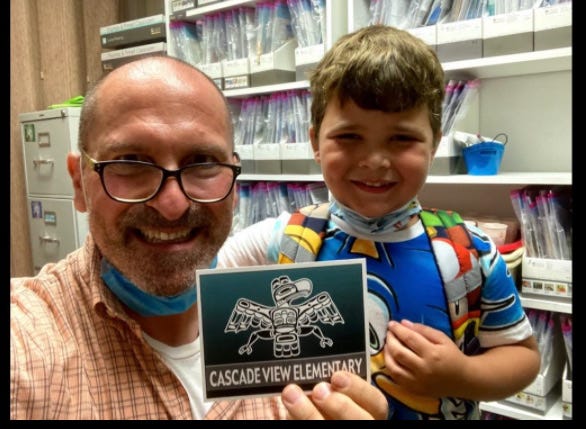
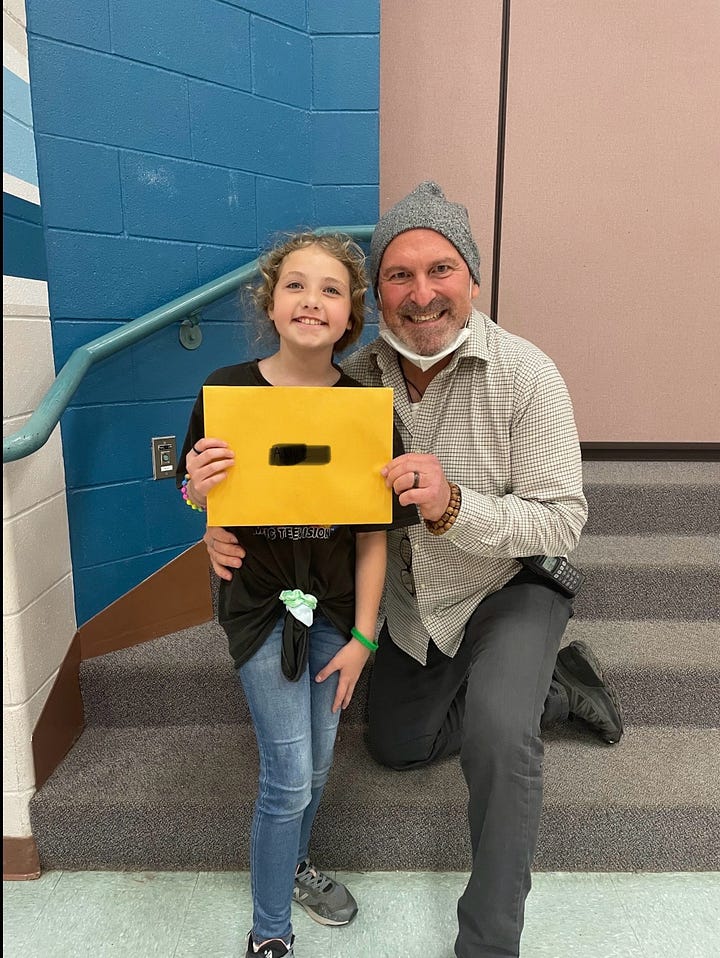
At the end of every month, we held recognition ceremonies where we celebrated our students as heroes and scholars. Heroes were students who went above and beyond in exemplifying and embodying their responsibilities. When each was recognized, as nominated by their teachers and peers, we used their examples as teachable moments for the entire student body, so they could learn from each other all the ways possible that students we becoming their “better angels.” Students were being given ample examples of how our school was living our Three Responsibilities. Practices like these transforms a school’s culture…guaranteed.
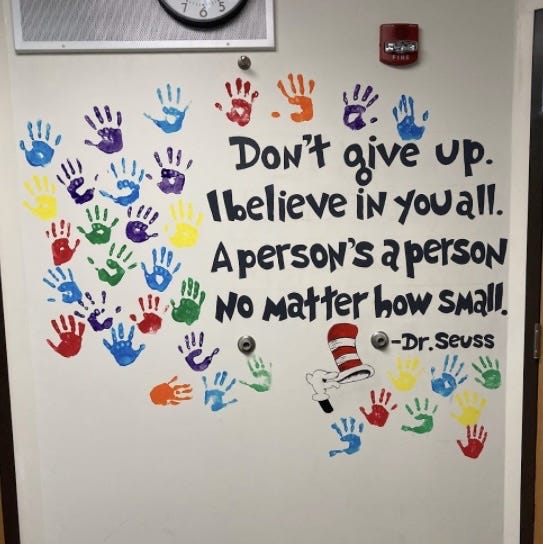
BTW—an important understanding: school rules, teacher rules; home rules, parent rules. All, the same thing. It works, or doesn’t work, in both places, and usually for the same reasons. Homes and families have definite cultures too. Homes and families can also have a ton of oppressive rules, spoken and unspoken, or a few meaningful responsibilities that views each individual as a contributing member of the family. Everything stated above that dealt with school applies equally to home settings. Read these Postcards from the Principal’s Office for what they also are—Elderings from a lifelong educator in how we can better raise our children, in all aspects and locations of their lives, in our increasingly disconnected world. Schools are an important part of the Village where so much more happens than just the teaching of reading, writing, and arithmetic—more on this, too, in a future postcard.
Okay, so now…. What are you going to do with what you’ve just read? You’ve spent 10 minutes running your eyes over my words, and I trust if you invested that time, you also included your mind and heart in the reading too. Which means you should be getting something meaningful out of what you’ve read. THAT is the reader’s, your, responsibility!
See what I did there?
Live, Laugh, and Love—with Clear Eyes and Full Hearts,
Always and Ubuntu,
~ kert
And with Ahimsa!
🙏🏼
PS: Here’s another fun example: at my schools, students could both play in the snow AND throw snowballs! As long as they upheld their three responsibilities—even a kindergartener knows the most appropriate way to throw snowballs AND take care of themselves, others, and the school. Oftentimes, their principal would also join them!






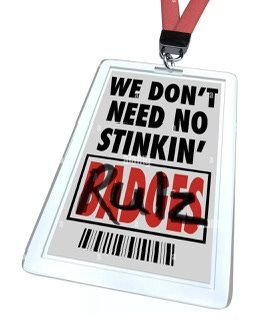




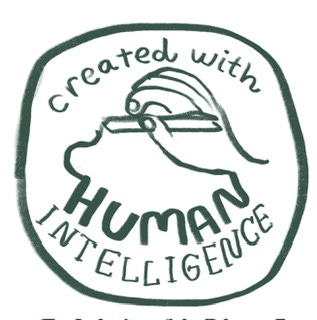

I LOVE THIS KERT! 😭👏🏽❤️
My kids' public Montessori school really opened my eyes to this concept. There were some district-wide "rules," but in general the teachers all focused more on creating an environment where there were, as you say, expectations and responsibilities that everyone subscribed to. Even the youngest kids could understand "Be Safe, Be Kind, Be Respectful," and apply them. It was so far away from the color-coded behavior charts and sticker systems and such that we saw at other schools, and more effective in my view. I couldn't parent by imposing a bunch of rules, either. I wasn't ever sure what to call our household approach to child management, but I guess expectation-and-responsibility-based would describe it pretty well.